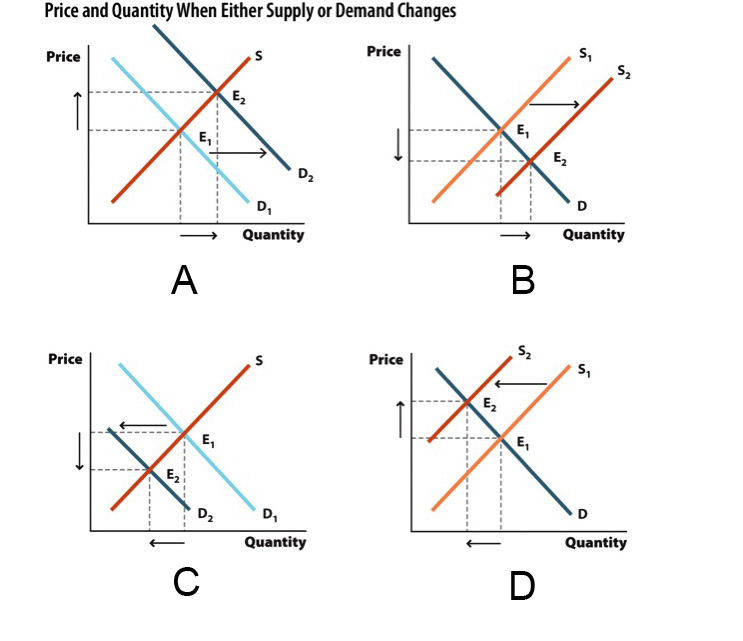A recent study shows the benefits of using public transportation. Government officials have hired your consulting firm to increase the demand for public transportation. They come to you with three of their suggestions.
Suggestion 1. Reduce the price of public transportation.
Suggestion 2. Increase the price of private transportation by increasing tolls.
Suggestion 3. Offer monthly and yearly passes that reduce the price paid per ride of public transportation.
Which suggestion(s) does your firm recommend?
FEEDBACK: Increasing the price of private transportation, a substitute good, will increase demand for public transportation. Your recommendations should be made on the basis of demand increasing, not quantity demanded increasing. Ask yourself, which variable(s) changes quantity demanded and which variable(s) changes demand?
FEEDBACK: The excise tax lowers demand because consumers must now pay a higher tax in addition to the price they pay for the good. People will tan less because they now have to factor in the extra cost. This will be shown as a leftward shift of the demand curve.
FEEDBACK: The law of demand states that quantity demanded will increase when price is lowered, all things being equal. In this case, more rooms will be sold. If only the price changes, apply the law of demand.
FEEDBACK: Increased insulation will decrease the demand for heating oil. The demand curve for oil will shift leftward, leading to a decrease in the equilibrium price and quantity of oil.
FEEDBACK: Since the cocoa butter is an ingredient in the production of chocolate, the change in the cost of this ingredient will affect the supply curve. Since the cocoa butter is more expensive, it will lower profit margins for firms, and the supply curve will shift. The demand curve does not shift, because ingredient cost does not shift the demand curve.
Which of the graphs above demonstrates the change in the market for smoke detectors?
FEEDBACK: The government wants households to be able to afford smoke detectors and to encourage the production of smoke detectors. As a result, subsidizing the industry and shifting the supply curve rightward will have the effect of lowering the equilibrium price and increasing the equilibrium quantity.
FEEDBACK: A storm that destroyed the wheat crops would cause the price of that grain to rise. Given that grains are an important input in the manufacture of cereal, the rise in the price of grain represents an increase in input prices for cereal. This is represented in the cereal market as a leftward shift of the supply curve and no change in the demand curve.
How could this happen?
FEEDBACK: A normal good like a Camry can become an inferior good if it is perceived to be a lower quality good. What causes a person with more income to buy less of a product?
FEEDBACK: An increase in the supply is shown as a rightward shift of the supply curve. An increase in the number of sellers will lead to an increase in market production, and as a result, will shift the supply curve to the right.
FEEDBACK: Since fries are a complement for burgers, lowering the price of the burger will increase demand for fries. Fewer people will cook burgers at home, because cooking burgers at home is a substitute good for getting burgers at a restaurant. Reducing the price of a burger will increase the quantity demanded, but will not shift the demand curve.
Which of the following is a consequence?
FEEDBACK: The cost of making tortillas has decreased due to a cheaper ingredient, so the supply of tortillas will increase. The headlines linking lower rates of heart attacks with consumption of tortillas will increase the demand for tortillas. Both of these changes increase the equilibrium quantity of tortillas. To determine whether price will increase or decrease, we need to know whether the shift in supply or the shift in demand is greater.
FEEDBACK: Since the sale involves a reduction of the price, you are going to be staying on your original demand curve, and moving to a lower point. This is a change in quantity demanded and a movement along the curve. If your purchase behavior were changing due to health concerns, for example, this would be shown as a shift of the demand curve.
What possible event could eliminate the disequilibrium in the market for shoes?
FEEDBACK: When there are too many spring shoes available, what is revealed is a surplus, where quantity supplied is greater than quantity demanded. On a graph, a surplus is illustrated with a horizontal line above the equilibrium point. The surplus can be removed as quantity demanded increases or when quantity supplied falls. In this case, an increase in income increases the demand for normal goods like spring shoes, thus removing the surplus.



